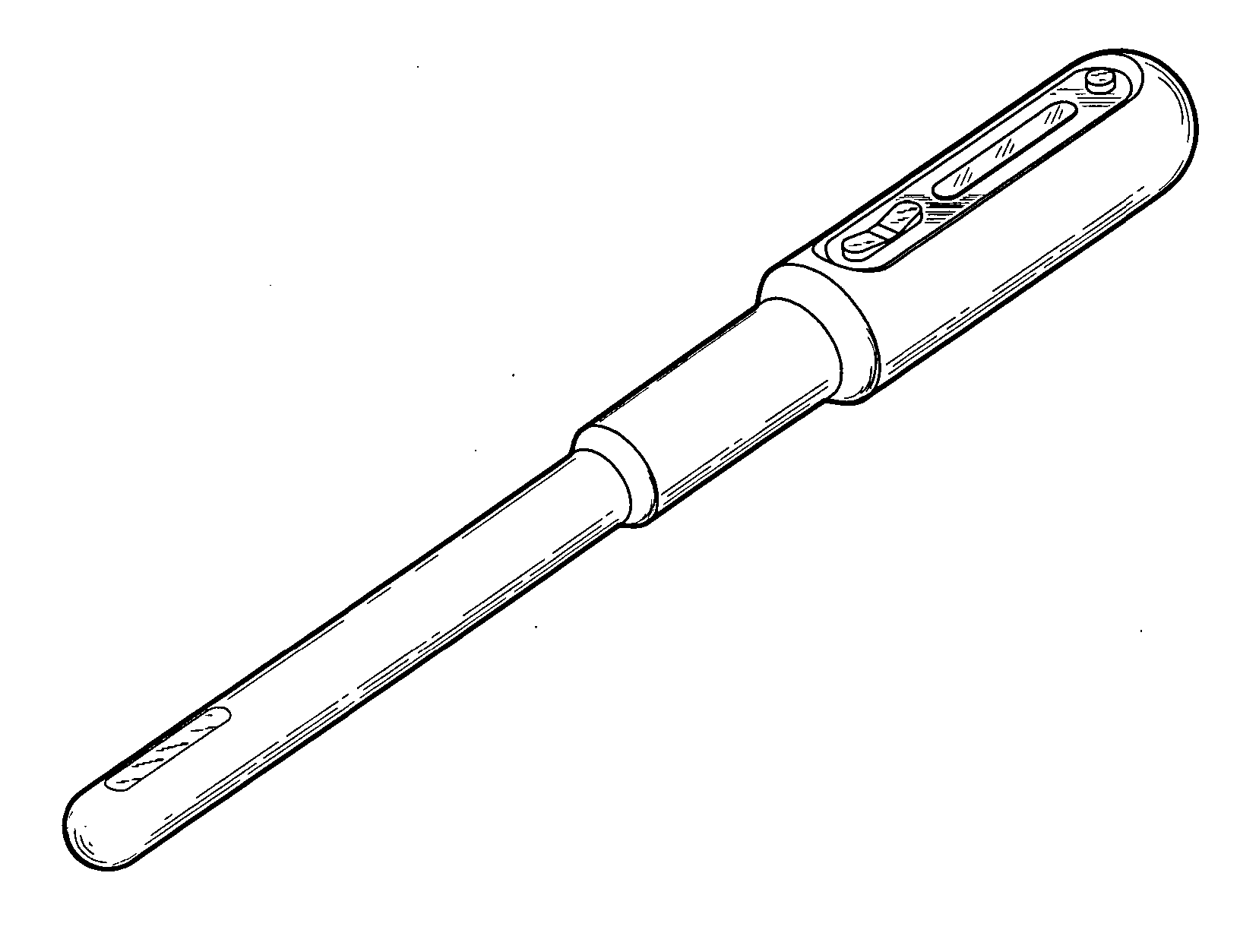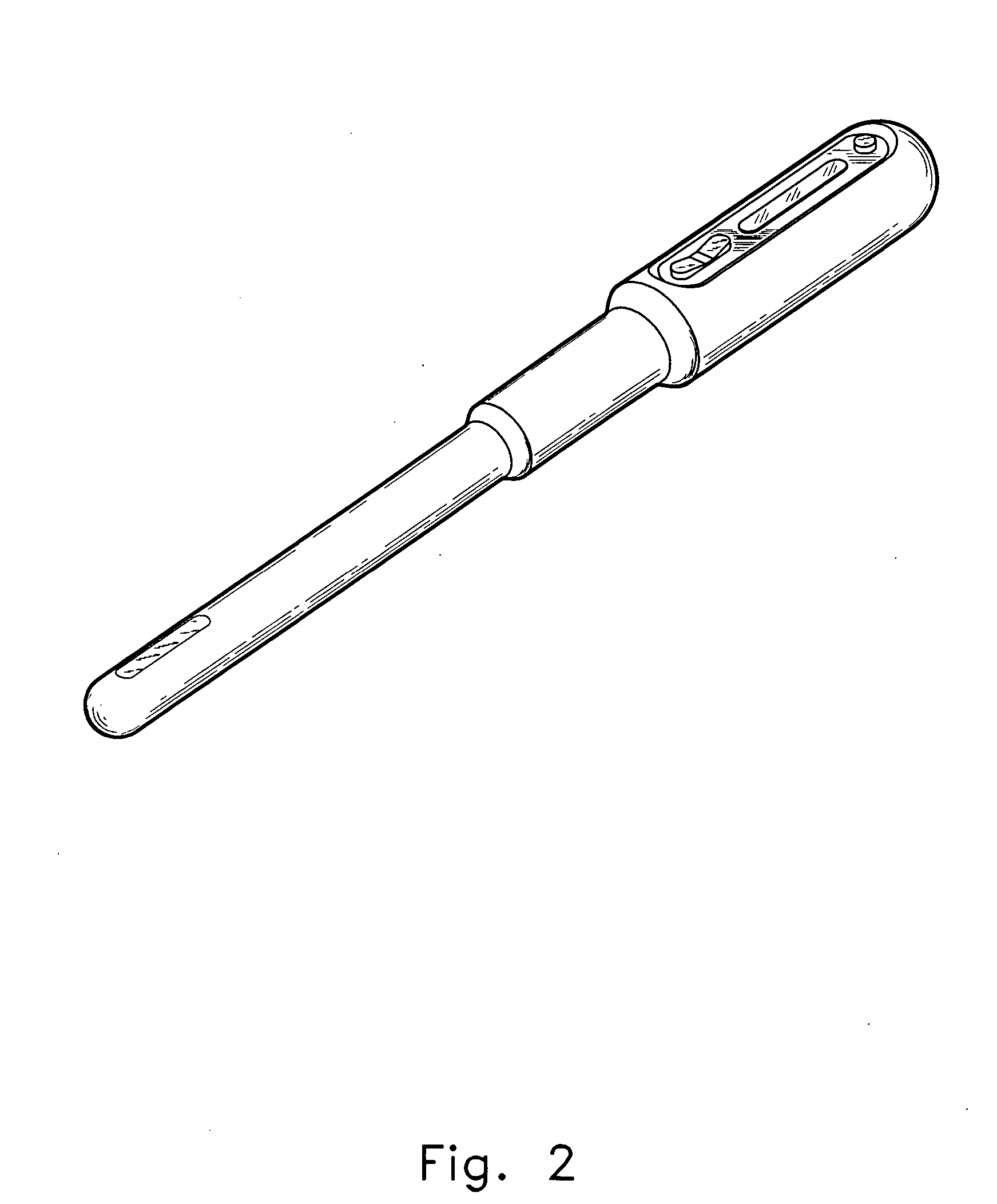Apparatus and method of personal screening for cervical cancer conditions in vivo
a technology of personal screening and cervical cancer, applied in the field of vivo personal screening for cervical cancer conditions, can solve the problems of inability to treat adolescents, inability to detect early cancer, and inability to effectively manage female patients, so as to avoid the unhealthy state of anguish and early cancer detection. , the effect of effectively managing the female patien
- Summary
- Abstract
- Description
- Claims
- Application Information
AI Technical Summary
Benefits of technology
Problems solved by technology
Method used
Image
Examples
Embodiment Construction
[0038] The purpose of the invention is to detect a tissue condition in the vagina, indicative of an early stage of the development of cervical. cancer, or of pre-cancerous state that warrants further investigation such as by colposcopy with biopsy, which detection will preferrably be incidental to the primary purpose of detecting the fertility status or hormonal status of the tissues.
[0039] The two main components of the invention include (1) a vaginally inserted detector probe, and (2) an electronic module for performing measurements with the probe's active elements and for evaluating, and communicating the measurement results.
[0040] Name and description of the structure of main component 1.
[0041] Component name: Probe.
[0042] Structure of main component 1: The probe is comprised of an electronic biophysical or electrochemical detector device capable of contacting tissues in a predetermined location within the vagina. It is made of a medical grade plastic in such a manner as, to hav...
PUM
 Login to View More
Login to View More Abstract
Description
Claims
Application Information
 Login to View More
Login to View More - R&D
- Intellectual Property
- Life Sciences
- Materials
- Tech Scout
- Unparalleled Data Quality
- Higher Quality Content
- 60% Fewer Hallucinations
Browse by: Latest US Patents, China's latest patents, Technical Efficacy Thesaurus, Application Domain, Technology Topic, Popular Technical Reports.
© 2025 PatSnap. All rights reserved.Legal|Privacy policy|Modern Slavery Act Transparency Statement|Sitemap|About US| Contact US: help@patsnap.com



